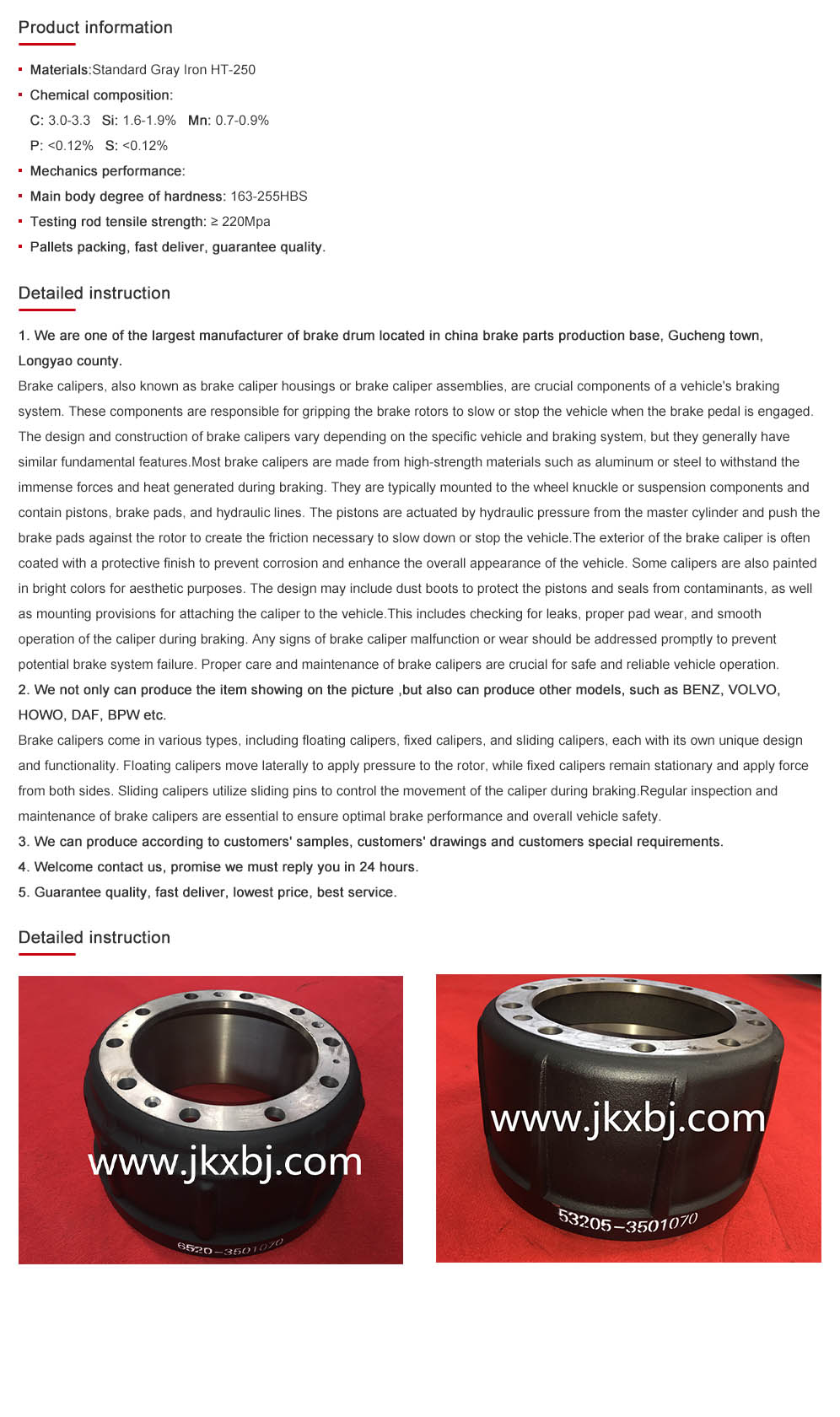Dec . 06, 2024 03:31 Back to list
Understanding the Differences Between Brake Drums and Brake Rotors Explained
Are Brake Drums and Rotors the Same Thing?
When it comes to vehicle braking systems, understanding the components involved is crucial for both safety and performance. Among these components, brake drums and rotors play a significant role. Many people, particularly those new to automotive mechanics, may wonder whether brake drums and rotors are the same thing. In short, they are not; however, they serve the same primary function of stopping the vehicle. This article will delve into the differences between brake drums and rotors, their respective advantages and disadvantages, as well as their applications in various types of vehicles.
Understanding Brake Drums and Rotors
Brake Drums Brake drums are cylindrical components typically made of cast iron or aluminum. They are used in drum brake systems, which were more common in older vehicles but are still utilized in many modern applications, especially in rear brakes of trucks and some economy cars. When the driver presses the brake pedal, brake shoes inside the drum push outward against the inner surface, creating friction that slows down or stops the vehicle.
Brake Rotors On the other hand, brake rotors are disc-shaped components used in disc brake systems. They have become increasingly popular due to their efficiency and performance in modern vehicles. When the brake pedal is pressed, brake calipers squeeze brake pads against either side of the rotor, generating friction to bring the vehicle to a halt.
Key Differences
While both components serve the same function of aiding in vehicle deceleration, there are fundamental differences between brake drums and rotors
1. Design and Structure One of the most apparent differences is their design. Brake drums are enclosed, cylindrical components, whereas rotors are flat, exposed discs. This structural difference affects the way heat is dissipated during braking.
2. Heat Dissipation Brake rotors generally offer superior heat dissipation compared to brake drums. The exposed surface of the rotor allows for better airflow, which helps prevent brake fade – a reduction in stopping power due to overheating. Drum brakes can trap heat, leading to potentially reduced performance under heavy braking conditions.
3. Maintenance and Replacement In terms of maintenance, brake pads used with rotors are typically easier to replace than brake shoes found in drum systems. Additionally, rotors can often be resurfaced if they become worn, while brake drums may need to be replaced if they become warped or damaged.
are brake drums and rotors the same thing

4. Performance Disc brakes (rotors) provide better performance when it comes to stopping power and are generally favored in high-performance and modern vehicles. Drum brakes, while effective, can be less responsive and may require more force on the pedal to achieve the same stopping power.
5. Application Brake drums are commonly found on the rear wheels of certain vehicles, especially in trucks and larger vehicles where additional braking force is needed for load management. Disc brakes are typically used on the front wheels, where the majority of braking force is applied. However, it’s not uncommon for modern vehicles to have disc brakes on all four wheels for enhanced performance.
Advantages and Disadvantages
Advantages of Brake Drums - Cost-effective Typically cheaper to manufacture and install than disc brake systems. - Simplicity Drum brake systems are generally simpler and can be beneficial in certain applications, such as parking brakes.
Disadvantages of Brake Drums - Heat management Can lead to brake fade due to heat retention. - Worn components Shoe replacement can be more challenging compared to replacing pads.
Advantages of Brake Rotors - Superior stopping power and heat dissipation. - Easier maintenance and performance options available (such as slotted or vented rotors).
Disadvantages of Brake Rotors - Higher initial cost compared to drum brakes. - May be more susceptible to wear in harsh conditions, leading to more frequent replacement.
Conclusion
In conclusion, brake drums and rotors are not the same, but both are integral parts of a vehicle's braking system. Each has its unique characteristics, advantages, and applications. Understanding these distinctions can help vehicle owners make informed decisions regarding maintenance, performance upgrades, and overall vehicle safety. As the automotive industry continues to evolve, disc brakes are becoming more dominant; however, brake drums still provide value in specific applications, particularly in larger or more utilitarian vehicles. Whether opting for drums or rotors, ensuring that your vehicle's braking system is well-maintained is essential for safe driving.
-
Scania Brake Drums: OEM Quality for Optimal Safety & Durability
NewsAug.16,2025
-
R.V.I: Advanced Remote Visual Inspection for Precision
NewsAug.15,2025
-
Discover HYUNDA: Innovative Vehicles, Equipment & Solutions
NewsAug.14,2025
-
R.V.I: Unlock Advanced Insights & Real-time Performance
NewsAug.13,2025
-
Kamaz Brake Drum: Durable & Reliable for Heavy Duty Trucks
NewsAug.12,2025
-
Heavy Duty Iveco Brake Drum - Premium Quality & Safety
NewsAug.11,2025
